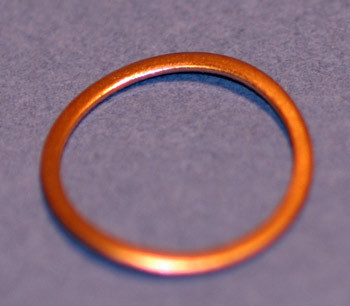Z-Valves are valves that look a little like a
Z with a bit of imagination. I admit that they probably resemble the number 7 more than the letter
Z. Notable manufacturers include Cressi, Aqualung, Lavo and so on.
In theory these will stay under pressure when you turn the valve off but in practice that tiny space eventually returns to ambient as you grip the knob/stem
This is not quite right, the air bleeds past the threads of the seat, not the thrust washer. If that were the case, certain Z-Valves would empty slowly over time.
The stem packing and the bonnet nut seal are under pressure when the valve is turned on
While true for most valves, certain Z-Valves have the packing nut pressured at all times. This has the big advantage of allowing for a butter smooth operating. The downside is that parts like the spindle cannot be changed unless the cylinder is depressurized.
A cutaway of a ScubaPro K-Valve shows that the seat seals the packing nut and spindle from cylinder pressure when in the closed position. This is a classic downstream valve. Parts can easily be changed, except the seat itself of course, while the cylinder is under pressure.
A cutaway of a Lavo Z-Valve shows a classic upstream valve. The packing nut and spindle are constantly exposed to cylinder pressure, regardless of the valve being opened or not. Seat threads do not stop air, it will leak around them. Parts can't be changed while the cylinder is pressurized.
IMO, there's almost zero reason to have a yoke valve, even if you have yoke-regulators.
The big advantage of a yoke only valve is that they are very tolerant to impacts on the
head. A convertible valve is prone to collapse in the G5/8" thread area when a hit occurs. This almost always renders the valve unserviceable, bending the thread back into shape is almost always impossible. Personally I neither would go for a Yoke only valve, but that is because I like the freedom to choose what I want.
As I said before, everyone's use case is different, there is no best valve for every situation. A person that only uses yoke regulators and has no intention of ever changing to DIN, has no reason to not use a sturdier Yoke only valve.




